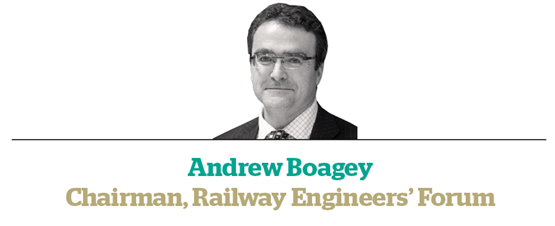 Anthony draws attention to some really important aspects of new rail station design and site redevelopment. He helps us to see what ‘good’ might look like, as well as reminding us that the traditional commercial development can, in fact, bring a repetition of our past mistakes.
Anthony draws attention to some really important aspects of new rail station design and site redevelopment. He helps us to see what ‘good’ might look like, as well as reminding us that the traditional commercial development can, in fact, bring a repetition of our past mistakes.
For me, the initial examples from the East Japan Railway read as cautionary tales, rather than blueprints for the future. We know that there are great commercial development opportunities in and around central rail stations. They can make or break a project business case. Hotels, office and retail developments can be transformative. But they can also scar a city for a generation. High-spec hotel and high-rise commercial developments alone do not bring any guarantee of success when the objective is creating a station with a sense of place. Thankfully, in the UK, we have Birmingham New Street and London King’s Cross to remind us how a standard should be set - defining new terms in the relationship between traveller, retailer and developer.
Let’s not forget that passenger (and rail media) pressure can (almost literally) pull superfluous retail out from the centre of our precious station concourses. When passenger numbers rocket, as we have seen in the past decade, a concourse serves as an important safety valve in times of train disruption.
It is about getting the balance right. And several ideas - such as encouraging suburban and regional markets, crafts and specialist retail to benefit from the natural connectivity of stations - strike a chord with our regional devolution agenda, as Britain’s newly empowered regional transport authorities find ways to break the investment deadlock that appears to surround so many stations on the network. Comments from Manchester and Birmingham illustrate that local planners are clearly flush with ideas and innovations, as well as looking forward to inward investment.
In fact, the opportunity to showcase local goods is a logical development. Even the more sophisticated motorway service centres, such as Westmorland, have learned the value of a transport centre as a regional shop window. Why not railway stations?
One can offer further international examples of stations that have gone right and wrong, proving that optimism alone does not pay. There are some notorious stops on the French high-speed network that have failed to act as catalysts for local development. The answer lies in getting the right local solution, and the right balance between transport and development opportunity. We need a scientific approach. We need tools to help us to monitor and understand this balance and to fight off the inevitable pressure towards a ‘do minimum’ planning option.
The article cites Vancouver’s Brent Toderian: “It is easier to increase densities in city centres - the real challenge is how well we do the suburbs, where the car too often remains the default choice.” Check out Mockingbird station in Dallas - this particular development used light rail and existing warehousing to create a mixed-use suburban regeneration, with new pedestrian links and improvements to the porosity of the site, which can often be a source of difficulty in rail projects where rail tracks divide communities, rather than bringing people together.
Getting the balance right is not easy. But at least station designers are no longer just talking about trains, or Brief Encounter.











